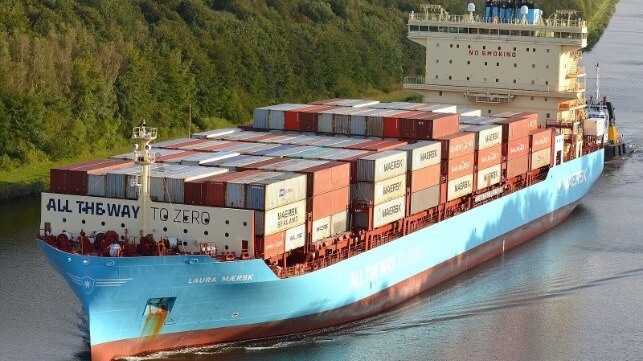Piecing Together a Fragmented Green Fuels Landscape

 Market fragmentation is slowing down the production and uptake of renewable fuels in the maritime sector. Turning the tide will require clearer signals from potential fuel buyers and sellers to develop the new supply chains that will enable shipping’s decarbonization journey.
Market fragmentation is slowing down the production and uptake of renewable fuels in the maritime sector. Turning the tide will require clearer signals from potential fuel buyers and sellers to develop the new supply chains that will enable shipping’s decarbonization journey.
There is a persisting disconnect between producers of renewable fuels and potential buyers in the maritime sector. Some volumes of renewable LNG and sustainable biofuels are available in the US market and shipping has an appetite for those fuels, however, there is currently no coordinated structure or process for the maritime sector to access them on any meaningful scale. The inability of ocean-going vessels to qualify under the US Renewable Fuels Standard (RFS) is also a formidable barrier to biofuels access.
Even in California, which is driving the development of low-carbon fuel standards in the US and beyond, the infrastructure still simply doesn’t exist yet to transport these fuels to ports where they can be bunkered onboard ships. As a result, the maritime industry is mainly using these products for offsetting the use of traditional marine fuels, with the renewable fuels being consumed in other industries. Marine players then benefit from emissions reductions in the form of carbon credits.
Don’t expect access to physical supplies to become easier anytime soon. Supplies of clean fuels, including sustainable marine biofuels and renewable LNG, will remain scarce for a significant time to come, and shipping is not the only sector eyeing them to address its decarbonization challenge. It will be competing directly with other sectors, including road transportation and aviation, for access to limited feedstocks.
Shipping will also be competing on an uneven playing field; the sector is yet to take a coordinated approach to developing its position as a serious off-taker and its position is also weakened as financial incentives such as the Renewable Fuel Standards are yet to apply to maritime transport. As a result, other sectors are having an easier time bridging the price gap between green fuels and their fossil fuel-reliant counterparts.
Catch-22
The current disconnect between the renewable gas sector and the maritime industry is partly because shipping is not (yet) sending the strong signals that are needed by the market to scale up the production of those fuels and build the infrastructure to transport them. Instead, demand remains confined to small pockets, exacerbating a disconnect between producers of green fuels and their potential marine customers.
Meanwhile, due to the lack of certainty of fuel supplies, we see shipowners de-risking their decarbonization strategies by avoiding committing to a single new fuel while waiting for more certainty. Many are instead reducing their greenhouse gas emissions through “imperfect” means such as the one-off bunkerings and carbon offsetting mentioned earlier.
We have a perfect Catch-22 situation where fuel supplies won’t be scaled up for lack of a certain market, and the customers won’t commit to any specific fuel due to the persisting lack of steady and reliable supplies.
This fragmented and siloed market is a missed opportunity for shipping. If those supply chains were in place, new fuels would represent a tremendous opportunity for shipowners and operators to vastly improve their vessels’ CII ratings and, for those vessels calling at EU ports, reduce the costs associated with EU ETS and ensure compliance with upcoming FuelEU requirements.
The current roadblocks are not caused by a lack of demand per se. Working with shipping companies across the sector, we see growing industry demand for renewable gas despite the significant price difference with traditional fuels, with some shipowners ready to pay a premium for green fuels. This is driven not only by regulation but also by those companies’ own ESG benchmarking and net-zero commitments.
The way forward
To make zero-carbon shipping a reality, the maritime sector needs to tackle this fragmentation and connect producers of green fuels as a more cohesive, homogenous off-taker, as is the case with the steel industry, for example. This will be essential to enable shipping to send the strong signals that are needed by the market to produce new fuels at scale, be it sustainable marine biofuels or renewable LNG, and build the infrastructure to transport them.
What we need is a concerted plan for marine green fuel supplies in the United States and globally. This will be essential to progress from one-off bunkerings to extensive and reliable supply chains that can give the shipping sector the confidence to transition to those fuels. In turn, this will give potential producers (and their financiers) the certainty that there is strong, steady demand in the maritime market, and make the necessary investments to scale up production.
With better processes and procedures in place, and stronger and more concerted demand side signals, there is an opportunity for shipping to become a significant off-taker of sustainable fuels, with a positive impact in reducing GHG emissions from a hard-to-abate sector.
A new playbook
In addition to new supply chains, a whole new playbook for new fuels needs to be developed. This must be built on the foundations of greater transparency and trust, not only on price but also on fuels’ origins, specifications, and actual physical availability in different locations.
Moving away from a single-fuel era will add new levels of complexity to the process of bunkering ships. In practice, standards must be developed to avoid any potential compatibility issues. Contractual arrangements will need to evolve too. Traceability will take on a new level of significance and rigor will be essential, to ensure that feedstocks don’t inadvertently compromise the sustainability credentials of a shipowner, or indeed those of their end customers who are putting more emphasis on their Scope 3 emissions.
Information will be valuable currency in a multi-fuel universe, putting even more importance on the capacity to get expert, independent advice.
We are at the start of a new commercial phase that will shape the direction of shipping’s energy transition. The realities of fuel supplies and production pathways will evolve rapidly, but by having more open conversations about incremental fuel demand and availability, it will be a smoother process.
We also need to flip this externally and collaborate to take a unified front to protect the sector’s interests to secure a fair allocation of alternative fuels and the financial incentives to enable uptake. Through these measures we hope that the industry can create a clearer roadmap to decarbonization as well as having a powerful seat at the table when it comes to competing with other sectors.
Margaret Doyle is Director of TSEA GREEN at Transparensea.
Top image: Laura Maersk in the Kiel Canal (Jens Dohrn / CC BY SA 4.0)
The opinions expressed herein are the author's and not necessarily those of The Maritime Executive.
No comments:
Post a Comment